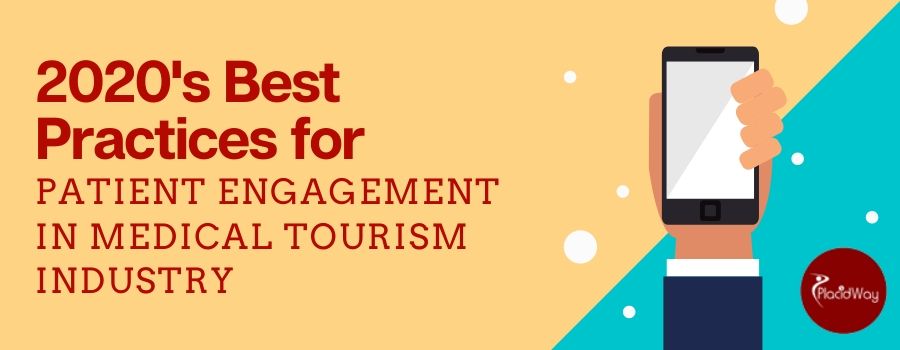Have you ever entered into your hotel room and found a basket full of your favorite fruits along with a personalized note? Or have you ever walked into a restaurant and had the host greet you by your name? These little personal touches may seem simple but make most of us feel appreciated and important. Just like any other sector, it is even more important to personalize the patient experience in the medical tourism industry. This lets patients have a great experience while being engaged in their treatment and recovery. To ensure proper patient experience, healthcare providers must focus on the right communication preferences. With smartphones becoming the primary source of communication, you have to ensure to engage your consumers using correct digital channels.
Which are the Key Communication Channels for Patient Engagement?
- Text Message
- Instant Messenger
- Messaging App
- Phone
- Social Media
- Medical Center/Clinic’s Mobile App, etc.
Email and Text- Still Most-Preferred Channels
Consumers now have innumerous options to communicate such as phone calls, messaging apps, social app, video call and more. Despite that, email and text are still among the most preferred channels when consumers prefer talking to a medical center. According to a study, 83% of consumers prefer to receive business communications over email. However, when it comes to conveying urgent information, texting is more preferred. For example, if you have to inform patients about appointment confirmation or reminders, immediate communication is essential for which text messaging can be apt. When presenting and clarify questions raised by a patient it is critical to schedule a phone call.
Communicating as per Patients’ Preferences can be Rewarding
Several studies have shown that consumers have rewarded businesses that communicate in their preferred way. When you use the right channels and frequency to communicate with patients, the benefits will be reflected in the forms of increased website visits and conversion, patient referrals and posting positive reviews.
Similarly, things can go wrong when you use the wrong channel and frequency to communicate patients. They may post a negative review or recommend against your clinic, have a poor opinion about your services, etc. you have to avoid this by providing contact control to the consumers.
How to Give Patients Contact Control?
A study says 52% of consumers want an option for choosing the channel where they receive messages from the provider. You have to make ways so that the patients enjoy complete contact control. They can specify the communication types they receive or receive messages only when they opt-in, can specify the frequency they want to receive messages and receive personalized communication.
Decide Suitable Communication Channels as per Consumer Age Group
Millennials or younger generations want personalized communications and preference of the time of day for receiving messages. They also prefer to receive offers and promotion related messages more frequently than the older generations. Younger generations are also more likely to provide a positive review online if they are happy with your communication and/or services.
However, they can also do exactly the opposite if their experience is not satisfactory. If the communication experience is poor, younger generations are more likely than older generations to have a poor opinion about your healthcare service, recommend against your clinic or post a negative review online. You can tackle this issue with personalization and choice of time of day of receiving messages.
Best Practices for Communication and Patient Engagement in 2020
1. All Customers are not Same
Do not treat every customer in the same way. Different patients may have different preferences. As a provider, your aim must be to get communications right for the patient and improve personalization. Let all your patients identify what communication they want and when they want. This will help to build a lasting relationship. Don’t force them to use your preferred channel e.g., communication via WhatsApp only.
2. Different Communication Channels for Different Purposes
Consumers use different communication channels for different reasons and want healthcare providers to adapt according to their preferences. Know about the communication channel preference of your customers and also map each channel’s power to the communication type you are sending.
3. Select a Channel based on Urgency of the Message
You must be clear to categorize what messages are urgent and which channels should be used to communicate them.
4. Let the Customers Control
This is the time when consumers are in the driver’s seat. They prefer experiences where they can control the channel and frequency of receiving messages. You have to reach your patients using the right channel at the right time. This will be rewarding in the form of booking an appointment or leaving positive feedback.
5. Global Medical Tourism Marketplace
Let the potential customers find your healthcare service in reputed global medical tourism market places. For example, you can promote your center, doctors, treatment packages and other promotions in a leading medical tourism marketplace like PlacidWay. This will increase your visibility in different digital mediums and attract international patients.
Last but not the least; this is the era of direct communication. Patients do not prefer third party interference when it comes to information or service by a healthcare provider. Use the best direct communication digital channels such as Instant Messaging, ChatBot or AI to establish real-time communication with the patients and improve their personalized experience.
Click the button to learn more about patient engagement in medical tourism:



